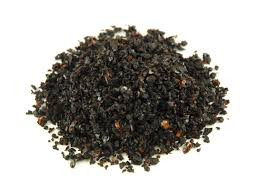 Loading... Please wait...
Loading... Please wait...
Urfa Biber flakes
- Home
- Online Shop
- SALE
- Urfa Biber flakes
- Home
- Online Shop
- Brighton Chilli Shop
- Chillies Spices & Herbs
- Dried Chillies
- Chilli Flakes
- Urfa Biber flakes
- Home
- Online Shop
- Urfa Biber flakes
Urfa Biber flakes
Product Description
Urfa Biber (commonly referred to as Urfa pepper) is a Turkish chile pepper that's distinctive for its dark burgundy color, irregularly sized flakes and intriguing salty-sweet-smoky-sour flavor. It's also quickly becoming a go-to ingredient for chefs across the country. For a bit of background on the beguiling spice and tips on how to use it, we turned to expert Lior Lev Sercarz, who owns New York City's spice mecca
We often experience a kind of Baader-Meinhof Phenomenon when it comes to unusual ingredients—we see something once in a dish, and then all of a sudden we can't stop coming across it on menus. Such is the case with Urfa Biber (commonly referred to as Urfa pepper), a Turkish chile pepper that's distinctive for its dark burgundy color, irregularly sized flakes and intriguing salty-sweet-smoky-sour flavor. It's quickly becoming a go-to ingredient for chefs across the country. For a bit of background on this beguiling spice and tips on how to use it, we turned to expert Lior Lev Sercarz, who owns New York City's spice mecca La Boîte and sources hard-to-find ingredients for chefs like Eric Ripert. Sercarz recently began offering monthly spice-blending classes to the public and is currently "spending late nights reading about the history of spices" for his second book, an illustrated encyclopedia of seasonings that will come out in 2016.
So first of all, what is Urfa Biber, and where does it come from?
Urfa is a Turkish pepper that comes from the town of Urfa, in the south of Turkey on the Syrian border. I don’t think I would be mistaken to say they've been growing it for hundreds of years. It’s definitely a big part of Turkish and sometimes Kurdish cuisine. Turkey is a country that uses a lot of chiles in general its cuisine doesn't use as much black pepper as that of the Western world. For certain preparations that are traditional to the region, like curing meats or pickling, the chile has historically worked really well. So chiles are very important to them.
How is Urfa Biber made?
Urfa peppers start out looking like something between a pretty big bell pepper and a poblano. Farmers harvest them when they’re orange-red or darker red. In order to get really nice flavor out of them, they dry them out in the sun during the day. So the chiles get direct exposure to sunlight, which cooks or chars them to the point that they’re a dark burgundy color. But instead of just letting them dry completely in the sun like you would see with guajillo chiles or the more Mexican-style chiles, farmers will cover them at night with fabric or plastic or even sometimes put them in bags. That allows them to preserve some of the natural oils from the skin of the pepper. That technique is called 'sweating' because the peppers stay moist under the covering. So they do dry but not entirely. When you do see ground Urfa pepper, it always has that oiliness and an almost damp texture. So it’s not just about the sensation of heat in your mouth but also about the texture. To me, Urfa looks like the sediment at the bottom of a glass of red wine—very distinctive.
It’s very rare to see a whole dried Urfa, because they're generally processed right away. Producers coarsely grind the peppers and add a touch of salt, not so much for flavor but to avoid chunks forming in packaging. That’s a sign of an improperly packed spice—if it becomes one big block or is full of lumps. The final product is nice for cooking you don’t have to mess with seeds and stems. There’s also a preparation that you almost never see outside of Turkey: pickled Urfa. But because they don’t export it, no one knows it here.
What does it taste like, and how should we be using it?
The flavor of dried Urfa is just spectacular. It has these notes of chocolate and wine tannins—there's a lot of depth, with a very pleasant heat. They’re not completely sweet. Something about the oiliness and the heat and the deep red color—it’s one of those things that you can pretty much add to anything. The direct sunlight exposure also creates the sensation of smokiness, even though it hasn't actually been smoked.
I like to see what people do with it in Turkey—there they mix it with cumin, sesame seeds or onion. Or with paprika. But in my blending career, I have yet to see something that doesn’t work with it. It’s a best friend to have in the kitchen. I think everyone should have it in their home. It elevates everything—you don’t even need to cook with it, you can sprinkle it on raw vegetables or even use it to dress up something you bought at the store. It just improves everything it touches. It has acidity, heat and saltiness it’s really a one-stop shop for seasoning.
Why are we seeing Urfa Biber on more menus now?
I think chiles in general are becoming more popular—they’re not new, we’re just discovering more of them. Every recipe ends with salt and pepper. One of my big arguments is: What if you thought of that as sodium and heat instead of salt and pepper? Sodium is important you need to have saltiness, but there are other ways to get that than just salt. And same with heat—chiles can be really interesting instead of pepper, because they also bring other elements to a dish. There’s nothing wrong with peppercorns, but there’s just so many other options out there.
As people become more and more vocal and proud of their food heritage, we’re seeing more Turkish dishes. A lot of flatbreads and pastirma [Syrian cured and air-dried meat]. It's exciting. It seems like every other week someone calls me and says, 'I just got back from Turkey and discovered something totally new!' And I’m like, 'You probably discovered Urfa, right?' And they say, 'How did you know?' Because we’re not used to seeing chiles that color or scent—they’re usually bright red or orange and powdery. It really stands out.
Another reason we're seeing more Urfa right now is that Aleppo pepper, which is very popular, is hard to get—because of what’s happening [politically] in Syria. The city of Aleppo [is being destroyed]. There’s no export of Aleppo—if someone tells you they do have Syrian Aleppo pepper, it’s either a stock from four or five years ago, or it’s been smuggled or it’s counterfeit.
So we have had to turn to other alternatives—in this case, one from literally across the border, because Aleppo and Urfa are not far from each other. That’s another reason that chefs and people like me have been turning to Urfa. There’s this beautiful chile-growing tradition there. Now, it's gaining traction here, too.



